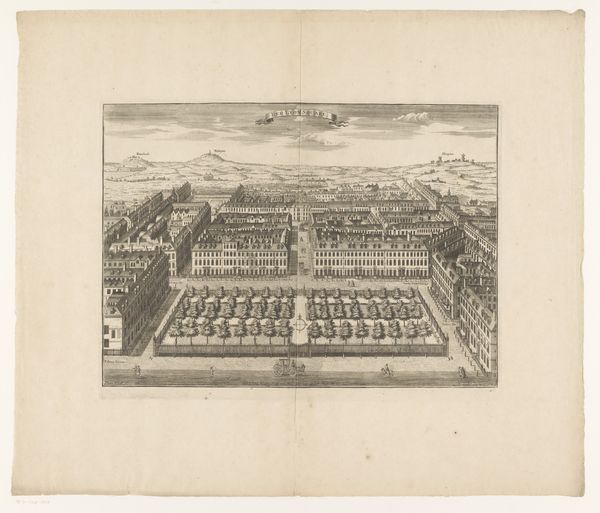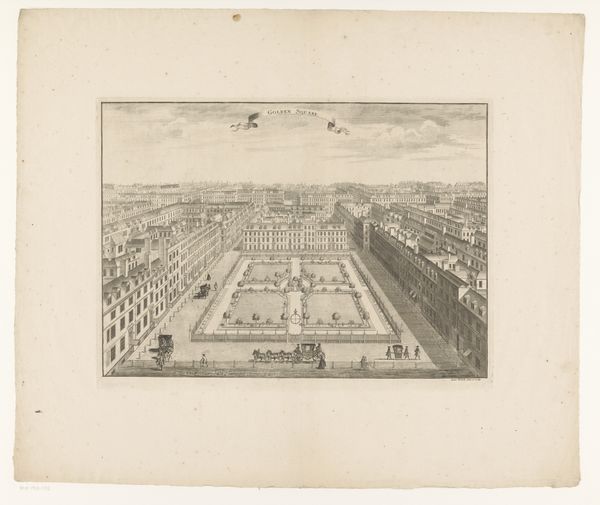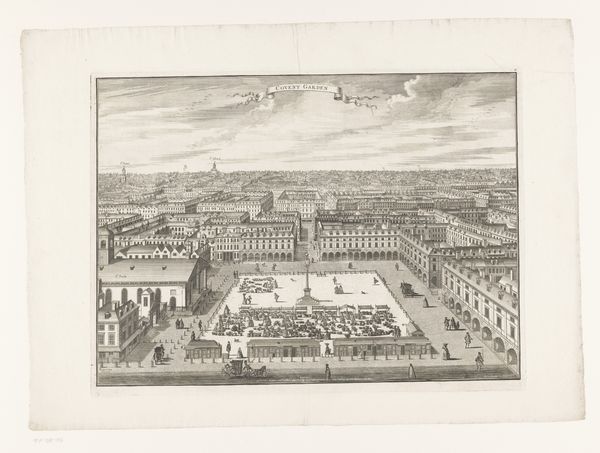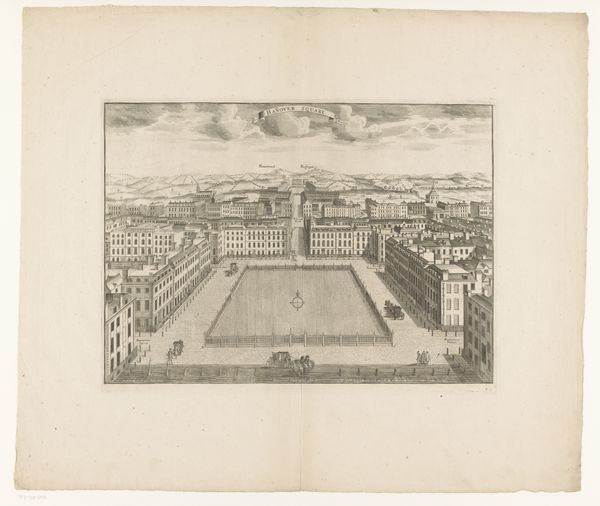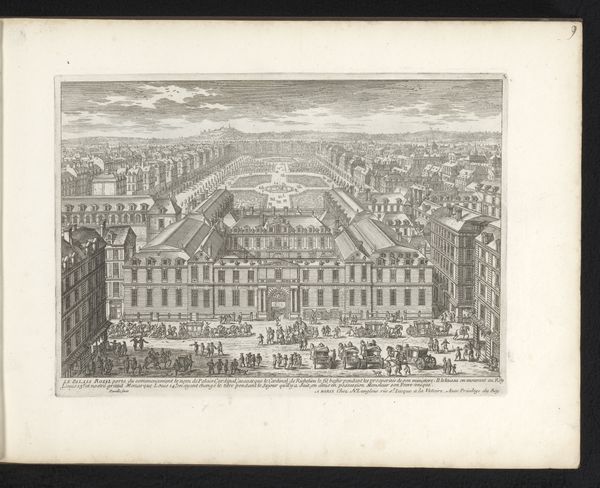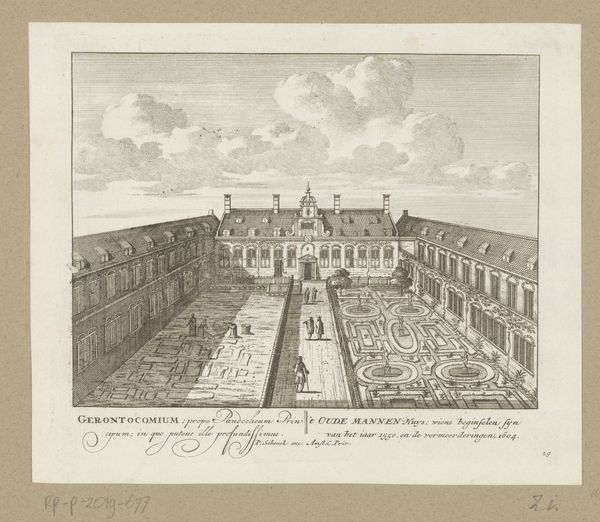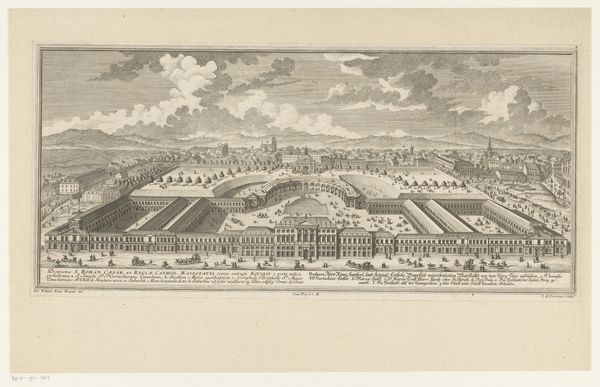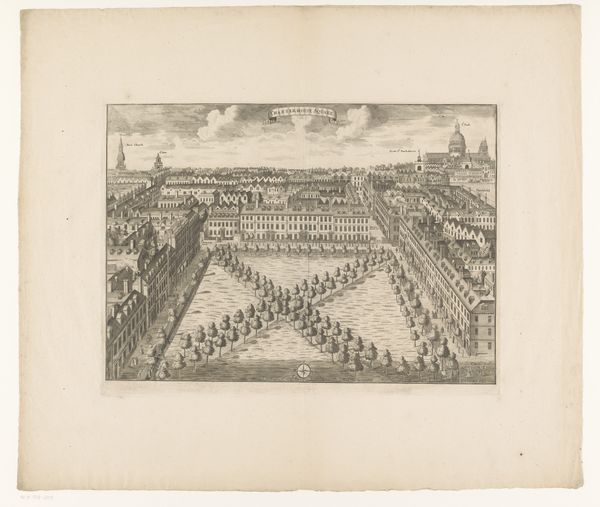
print, engraving
#
baroque
# print
#
line
#
cityscape
#
engraving
Dimensions: height 344 mm, width 465 mm
Copyright: Rijks Museum: Open Domain
Editor: Here we have Sutton Nicholls's "View of Leicester Square in London," an engraving from between 1720 and 1731. The detail is amazing, and I’m immediately struck by the rigid order and symmetry. What kind of social context can help us understand this piece? Curator: It's fascinating how Nicholls presents London here. The print is not just a rendering of urban space; it's a statement about power, class, and control in the early 18th century. The baroque style with its clear lines and defined spaces reflects the hierarchical society of the time. What do you notice about who *isn't* represented in the scene? Editor: Now that you mention it, the image seems to only show upper-class society and ignores the working class and poor neighborhoods. Was Leicester Square deliberately designed to project such an image? Curator: Precisely. The rigid planning, with the square as a central focal point, serves as a stage for aristocratic life, concealing the city’s complexities and inequalities. Nicholls isn’t just documenting; he's participating in constructing a particular narrative. This wasn’t a space easily accessed or enjoyed by all. Editor: So, the print acts almost as propaganda, normalizing a social hierarchy? Curator: Exactly. Think of this artwork as a carefully constructed piece of rhetoric. How might this image influence how people in different social strata viewed their place in London’s society? Editor: It gives a whole new dimension to this seemingly straightforward depiction of a London square. Curator: Absolutely. Seeing art as intertwined with social and political structures really changes our understanding of it. Editor: This discussion reframed my understanding of the image. Thanks! Curator: It was a pleasure. I'm glad we were able to look beyond the surface.
Comments
No comments
Be the first to comment and join the conversation on the ultimate creative platform.

